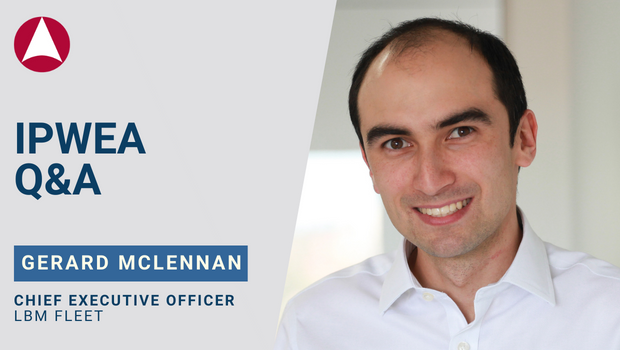Tell us about yourself, your background and why fleet?
I’m the CEO of LBM Fleet. I actually started off in the world of accounting and law, working for EY in Tax and Law. I stumbled into fleet when I co-founded LogbookMe – we automated the manual paper logbook.
From there, LogbookMe has grown into LBM Fleet over the last decade and now looks very different with products ranging from Logbooks to safety management, fleet optimisation, smart operations as well as an integrated shared vehicle solution.
LBM has a dedicated team of fleet experts in our client teams who are passionate about helping our customers optimise their fleets and utilise their data to deliver their goals.
Who is LBM Fleet and how are you different to your competitors?
LBM Fleet is a fleet solutions company that works with Australia and New Zealand’s most forward-thinking organisations in providing both operational and transformational technology solutions. We deliver everything from driver safety management, asset efficiency programs, compliance management and cost savings projects.
We position our solutions to value add alongside the traditional asset management aspects of fleet. At the heart of our proposition is utilisation of data, technology and industry expertise to enable execution and delivery of fleet projects. Our key difference is our partnership approach through our dedicated customer success team which helps clients capture the full value – we don’t just sell technology and leave you to work out how to interpret and use it.
At the moment, a lot of our projects are helping organisations with fleet cost reduction, managing and optimising pool cars (and more broadly mobility) and enabling sustainability outcomes by looking at both the asset mix (ie. Electric vehicles) and the overall utilisation (ie. How many cars are actually needed).
What does it mean to partner with IPWEA?
We are very excited to partner with IPWEA as Fleet Technology Partner. We have been working for a few years both directly and indirectly with IPWEA through our clients and also some joint initiatives.
I think there is little doubt that the advancement of technology has and will continue to have large scale impact on fleets. We want to help IPWEA and their members navigate the dynamic technology landscape. We also feel that IPWEA enables fleet professionals to maximise their effectiveness and we can help accelerate the delivery of the outcomes.
We hope to build a strong relationship with IPWEA and its members over the next year by providing various thought leadership content, making sure technology is on the agenda and working actively with members at the conference held in Brisbane next year.
What do you think companies are lacking in their fleet management and operations today?
There’s been a lot of fundamental and leapfrog change in the past decade in fleet. We have transformed from managing fleets using paper, excel and ‘gut feel’ to mixing in huge amounts of data coupled with technology and everything being connected in real-time. This has been transformational, but we are constantly frustrated where technology is adopted but not effectively used.
I think for a lot of fleets they don’t necessarily know what best practice looks like. This was partly why we were so keen to be the IPWEA technology partner. Obviously, we provide a lot of technology to fleets but more broadly there’s a lot of great solutions continually being released by all of the players in fleet from OEM to tech giants – we believe that the leading modern fleets need to stay abreast, adopt, implement and operationalise the latest technology to foster continual improvement and best practice.
What do you see could be done better in the fleet industry?
The biggest gap we see is between reporting and operationalisation. These days it’s pretty easy to pull lots of fleet data from fuel cards, telematics, the car or asset itself, general ledgers – but there are so many fleets that do very little with all the valuable data. This is a huge, missed opportunity.
With the right policy mix coupled with a strong consequence framework workflow tool, we have seen some of the largest fleets totally transform their fleet around cost, safety, operational efficiency, and asset allocation which realises large scale benefit to the organisation.
Continuing to have the focus and a willingness to reinvent and challenge the status quo is fundamentally important.
Fleets by nature are long term assets but that doesn’t mean thinking needs to only be long term.
Technology is constantly changing which is driving rapid innovation. It’s important to stay focused on the newest developments from both OEM, after market as well as broader fleet solutions that can add value to your fleet. There is new technology being released weekly, not every 3 or 4 years aligned to the lease.
Where do you see the future is going for fleet?
We are seeing a large shift in our fleets looking for transformational outcomes. This is based on two key themes usually mandated from management or the board being sustainability and efficiency.
There is no doubt a large focus on electric vehicles and what this means for fleets from both asset selection, cost and budgets, infrastructure requirements and overall suitability and fit for purpose based on use. Our tools are being used to help navigate this new area and create data-based assessment and decision making to determine a plan of action and overall strategy to align fleets to the broader sustainability goals of the organisation.
The other is around efficiency. It is so easy to understand how the fleet is performing at a micro level and this is resulting in moving a lot of assets into pooling and shared arrangements. The technology is the key enabler here as it’s becoming easier to dynamically manage and ensure the right asset is at the right place.














